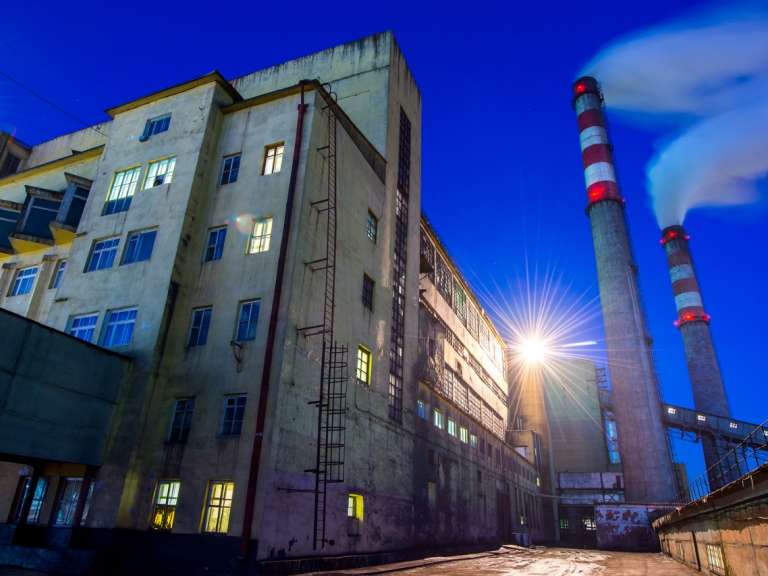The Role of HELE Coal Plants in the Pursuit of Near-Zero Emissions Targets
Penny HitchinGetting to zero: How Japan is using HELE coal plants to reduce future coal emissions to near zero

The global energy trilemma facing governments is to provide affordable, secure, and low-carbon energy. The specific challenges, however, vary from country to country, and there is no one-size-fits-all solution. In some parts of the world, high-efficiency, low-emissions (HELE) coal plants will be an important part of the generating fleet. These plants deploy a suite of modern, commercially available technologies to increase efficiency and reduce emissions. However, continuing to use large amounts of fossil fuel while also reducing emissions to the levels aspired to in the Paris Agreement will require replacing less efficient fossil fuel plants and preventing greenhouse gases from entering the atmosphere.
Energy security, economic viability, environmental protection, and safety are the key planks in Japan's strategy. Notably, the nation is committed to cutting greenhouse gas emissions. Before the Fukushima incident, Japan aimed to achieve this by increasing nuclear capacity to account for half of the country's electricity supply. However, the 2011 tsunami prompted a change of course for the world's fifth-largest consumer of electricity, as plans to expand nuclear power were abandoned.
In spite of the development of its renewable capacity, Japan still relies on fossil fuel. Burning imported coal will play a significant role in the nation's electricity generation going forward, as 45 new HELE coal plants are planned for the next decade, according to the World Coal Association. The Japanese coal fleet, however, boasts the highest average efficiency in the world (41.6 percent LHV, net). Its Isogo Unit 2, which is the world's cleanest coal plant in terms of emissions, has NOx, SO2, and PM emissions comparable to those of a natural gas-fired combined cycle plant, according to IEEE Spectrum. The IEA Clean Coal Centre points out that, in Japan, high coal prices combined with moderate investment costs mean that building and operating HELE coal plants makes more sense than opting for conventional coal plants. In 2016, Japan's government determined that all new coal-fired generating plants must run at at least 42 percent thermal efficiency.
The most efficient HELE coal plants use advanced technology to achieve efficiencies of between 45 and 50 percent. A 1–2 percent increase in efficiency results in a 2–3 percent decrease in CO2 emissions. However, while HELE coal is more efficient than conventional coal, if climate change goals are to be met, the technology must be deployed in tandem with carbon capture and sequestration (CCS) technology. Doing so will greatly help Japan and other nations reach near-zero carbon-generation emissions.
The component technologies for capture, transport, and storage of CO2 are well-established, and demonstration projects are in operation, but global uptake has so far been limited. The Global CCS Institute identifies fewer than 20 large-scale CCS projects that will potentially be operational by the end of 2017.
Undoubtedly, the main impediment to CCS deployment is financial. Adding CCS to a coal power station increases capital expenditure—for the CO2 capture, compression, and storage equipment and because a larger plant is needed to generate additional energy for the CCS process. CCS requires additional fuel costs for the capture process, and it entails additional operations and maintenance costs. The World Coal Association (WCA) is one of the industry bodies arguing that in order to be incorporated into the global fleet of the future, CCS needs the same type of support as renewables. The WCA states: "Policy parity will drive the investment, which is integral to achieving the necessary carbon emission reductions from CCS."
Only when CCS is being more widely used is the unit cost of the technology likely to come down. In the meantime, governments will clearly need to offer incentives in the form of subsidies or incentives, or penalties such as a tax on carbon emissions, to encourage the deployment of CCS. The Energy Technologies Institute, which models CCS scenarios for the UK through 2030, concludes that CCS can play a role in reducing the UK's costs of meeting its carbon targets by tens of billions of dollars. Similar savings are available to other countries.
Japan has a keen interest in CCS R&D. In 2016, its first fully integrated CCS project started operating in an oil refinery in the Tomakomai area in Hokkaido. CO2 from the hydrogen production unit is to be captured, purified, and subsequently compressed and injected into suitable offshore rock formations, which will contain the gas.
Tokyo has successfully used emissions trading schemes (ETS) to reduce emissions. In fact, it became the first city to impose a cap-and-trade program on its urban buildings. Last year, a Japanese Environment Ministry panel reported that a carbon tax will help the government achieve its 80 percent target for reducing greenhouse gas emissions by 2050.
Reducing carbon emissions is a global challenge, and fossil fuels will be in the global energy mix for decades to come. Thus, reducing the carbon footprint of coal power is critical—and investing in CCS technologies offers a way to do this. However, this will not happen if left to the market. Government or transnational help is needed to make the technology affordable, as well as essential.
The future holds the promise of smart cities and power plants that utilize interconnected, decentralized networks to provide more efficient and sustainable public services.
There is clear evidence linking the presence of more women in the boardroom to increased profitability, ROI, and innovation.
With coal-fired power plants achieving an average 33 percent efficiency, it's crucial to build advanced HELE plants to reduce global carbon emissions.